Dr. Donyall Dickey, Ed.D. will lead a keynote session at the National Alliance of Black School Educators 47th Annual Conference in Dallas, TX. For more information and to register, visit: https://www.nabse.org/conference-registration.
All children deserve access to instruction of the highest quality, taught in an environment fully conducive to the process of teaching and learning. And yet, equitable access to such instruction remains unrealized for millions of pupils nationwide. Likewise, teachers hear a common refrain, “Be sure that your instruction is more rigorous.” But what does that mean? Rigor has yet to be operationally defined for many teachers.
Daily instruction characterized by rote memory was widely accepted 30 years ago as rigorous, but views of instruction have shifted, and so must our collective approach to teaching and learning. So, how do we ensure that students have unfettered access to ‘rigorous’ instruction?
In short, in order for the quality of instruction in schools and districts to be improved, we must change how we think about student learning and the provision of standards-informed instruction. Developmentally appropriate rigor resides in the standards.
Students must be introduced to instruction that is designed to develop their conceptual understanding of academic language and concepts so that they can independently: (1) apply the knowledge they have acquired, (2) analyze information, (3) synthesize what they have learned, (4) evaluate the content, and most importantly, (5) create new knowledge and new understandings for others to consume.
By changing our expectations for all students, we can remove the biases that create inequities in instruction. The most significant predictor of underperformance is the absence of common instructional language and tools. This absence inhibits the provision and facilitation of rigorous, standards-informed instruction in our classrooms. But, there are tools available to help advance progress.
The core content standards for English language arts, mathematics, social studies, and science are dense in academic language. I believe it is unrealistic to expect the vast majority of our students—let alone students who are striving to read and comprehend at a level consistent with developmental expectations—to demonstrate proficiency without instruction that is focused on a conceptual understanding of core content standards language.
There is an imperative that students and teachers, as well as those supporting and evaluating teachers, understand the terms that comprise each standard. We have work to do to ensure that students have equitable access to the academic language of the content standards. Why? Because the language of the assessment can be a chief barrier to improvements in student achievement.
For example, in grade 3 students are expected to determine the main idea of a text, recount its key details, and explain how those details support the main idea. But what does that mean to our students? And how do we ensure that every student under our care understands what this actually means?
Rigorous instruction aligned to the aforementioned standard should produce the following results:
- Students should be able to determine what the text is mostly about.
- Students should be able to distinguish between the main idea and the topic/subject of the text, which is too broad to be the main idea. “Too broad” as a concept must also be taught, and it must be associated with the topic of the text.
Students should be aware that:
- The main idea of the text is not always found in the first sentence of a text. In fact, it is seldom found there.
- In some cases the main idea is not stated at all.
- Key details are too narrow to be the main idea. “Too narrow” as a concept must be taught, and it must be associated with key details in the text.
- To support their determination of the main idea, students will need a great deal of practice with distinguishing between ancillary and important words or phrases. This will help them explain how the key details support the development of the main idea.
The language of the content standards is finite, so we can resolve the access gap by ensuring that:
- K–12 curricula includes operational definitions of Tier II (general) and Tier III (content-specific) academic language.
- Teachers and school leaders refrain from making assumptions about students’ knowledge of academic language. You might be surprised by the number of students who are not conversant in the academic language of the standards.
- Teachers refrain from watering down the academic language. Instead we should bring this language to the students. They can handle it.
- Teachers reinforce and reassess students’ understanding of the academic language for each day’s posted objective. When we relate information to students on Monday and ask them to recall it on Tuesday, we typically find that they did not retain the information. Reinforcing students’ knowledge of academic language cannot be done by simply using the unfamiliar word in a sentence or copying terms and definitions from a glossary. We need to embed it in our everyday conversations.
We need to provide educators and students across grade levels with tools that have common, agreed upon language built into them.
Supporting educators and staff with curricular materials that define important academic language in a single, streamlined way will result in students having much needed access to consistent definitions of these terms, without the conflation that is currently pervasive in daily instruction and assessment opportunities.
There is no substitute for coherent instructional materials aligned to the true and nuanced expectations of the standards. There is no shortcut to proficiency in English, mathematics, science, and social studies. There is but one pathway. Access.
Donyall D. Dickey, Ed.D. is the lead author for Scholastic Literacy and Chief Executive Officer of Educational Epiphany. For more, follow him on Twitter @DonyallD.

